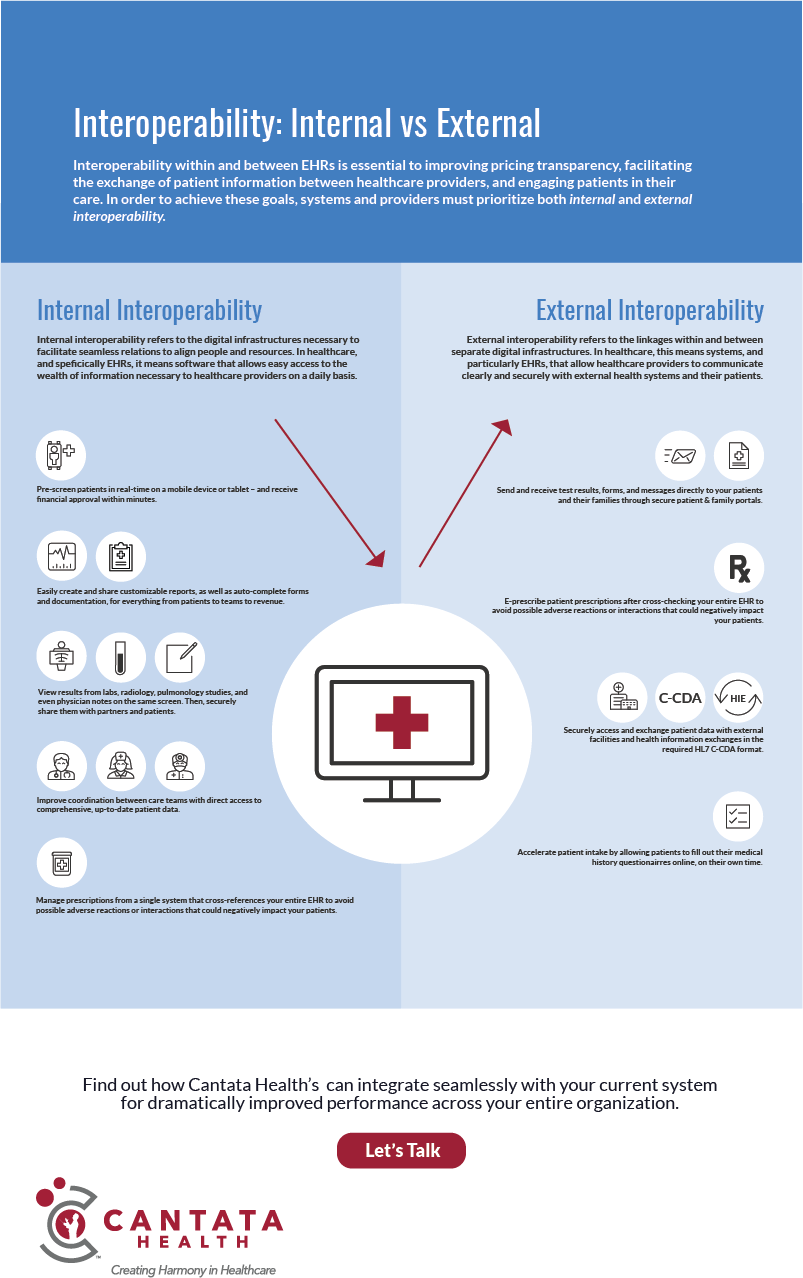The Centers for Medicare & Medicaid Services (CMS) recently announced a new approach to the familiar “meaningful use” EHR incentive program.
Now termed “Promoting Interoperability,” these updated criteria seek to address pricing transparency, facilitate the sharing of patient information between providers, and further engage patients in managing their care. To accomplish this, all eligible providers will be required to demonstrate compliance with 2015 Edition of CEHRT by next year.
And while these changes are welcome, they appear to heavily emphasize external interoperability over internal interoperability.
These two types of interoperability are deeply interrelated, but they are rarely considered to be of equal importance. While internal interoperability emphasizes improvements to physician communications and hospital workflows, external interoperability focuses on a health facility’s ability to communicate with external actors, including their patients.
And while external interoperability is receiving quite a bit of attention at present, it is the speed and accuracy of internal communications that make external interoperability a reality.
Our infographic, below, illustrates the components of internal and external interoperability. How does your EHR measure up?

